Nona Inescu
× Hannah Sophie Dunkelberg
guest gallery: Catinca Tabacaru Gallery
Bucharest, Romania
Apr 12 – May 17, 2025
Constellations 2025
gallery-share initiative
April 12 – 13
12 – 6 pm
There is no outside to catastrophe, no singular moment in which collapse begins; it has always been there, folded into the gestures of preservation, the structures meant to protect but which, upon closer look, do not so much shelter as they enclose. Nona Inescu and Hannah Sophie Dunkelberg’s works move through the contradictions of environmental collapse and domesticity, where the destructive and the intimate are bound together in sculptural forms.
Nona Inescu’s Common Daisy (Bellis perennis)—a series of brass sculptures—follows a sequence of mutated specimens found in radioactive zones like Fukushima and Chernobyl, glowing with a sensual aura that subtly carries catastrophe in line with anatomy. Inescu’s practice, attuned to cycles of transformation, invites a reading of human bodies and their interactions within a broader geological narrative. Hungarian psychoanalyst Sándor Ferenczi theorized that human sexuality itself is an inheritance of deep time, sculpted by the upheavals of tectonic shifts, both physical and psychological. Inescu’s work reminds me of this notion, by engaging with biological morphologies as inscriptions of environmental trauma, where human relationships bear the imprint of planetary crisis.
In contrast, Hannah Sophie Dunkelberg’s en rêve (en: in a dream) reliefs are a series of “enlarged hieroglyph-like gestures” that hover between language and mark-making, depicting vegetal forms as distant memories, as though pulled from art history books just as references, suggesting a disconnect from their material ontologies. Here, Dunkelberg’s mechanical process can be narrativized as the professional inversion of a sharp scratch of a key dragged across an ex lover’s car, lodging in the lacquered surface a high pitched, siren-like scream. Freud considered dreams to be wish fulfillments; similarly, we can view Dunkelberg’s flower and plant sketches as symbolic consolations for our ecological grief, mirroring outside environmental collapse onto the sheen of metallic surfaces. Blending handcrafted and industrial qualities, Corset 3 does not cinch or conform, but resist: oversized, steel-plated, unmoving. Not garments but armor, not something worn but something that interrupts, taking up space where it should yield. And then, there is the Beletage/c, a lamp experiment taking the shape of spectacle; something to be admired and feared from a distance, its sharp edges refusing once again domestic function.
Inescu’s Preservers (case for nurturing interpersonal relationships) is a steel structure sparsely occupied by dried thistles, drawing from the imagery of sarcophagi and botanical transport. Sleep and death fold into one another, tracing the movement of flora and entire ecosystems through history—from colonial displacements to contemporary ecological crises. Intimacy emerges as both a vessel of preservation and a force of intrusion. Consequently, thistles—an invasive, thorned species, delicately held yet never fully grasped, lest not to wound—echo the contradiction of attachment. Love, like an unruly transplant, takes root where it is not invited.
In the end, there is no final resolution—though nobody was really looking for one. No clear distinction between rupture and continuity. If Dunkelberg’s work teases the edges of reinvention and intimidation, Inescu’s operates within the space of an impending event, a speculative suspension. Catastrophe, in this setting, is not a singular event but a state of being, embedded in mirrorings of the outside in inner worlds.
Ioana Gemanar
The exhibition is part of Constellations, a gallery-sharing initiative through which we have the pleasure of hosting Catinca Tabacaru Gallery (Bucharest, Romania) and Galerie Mueller (Basel, Switzerland) at Gunia Nowik Gallery.
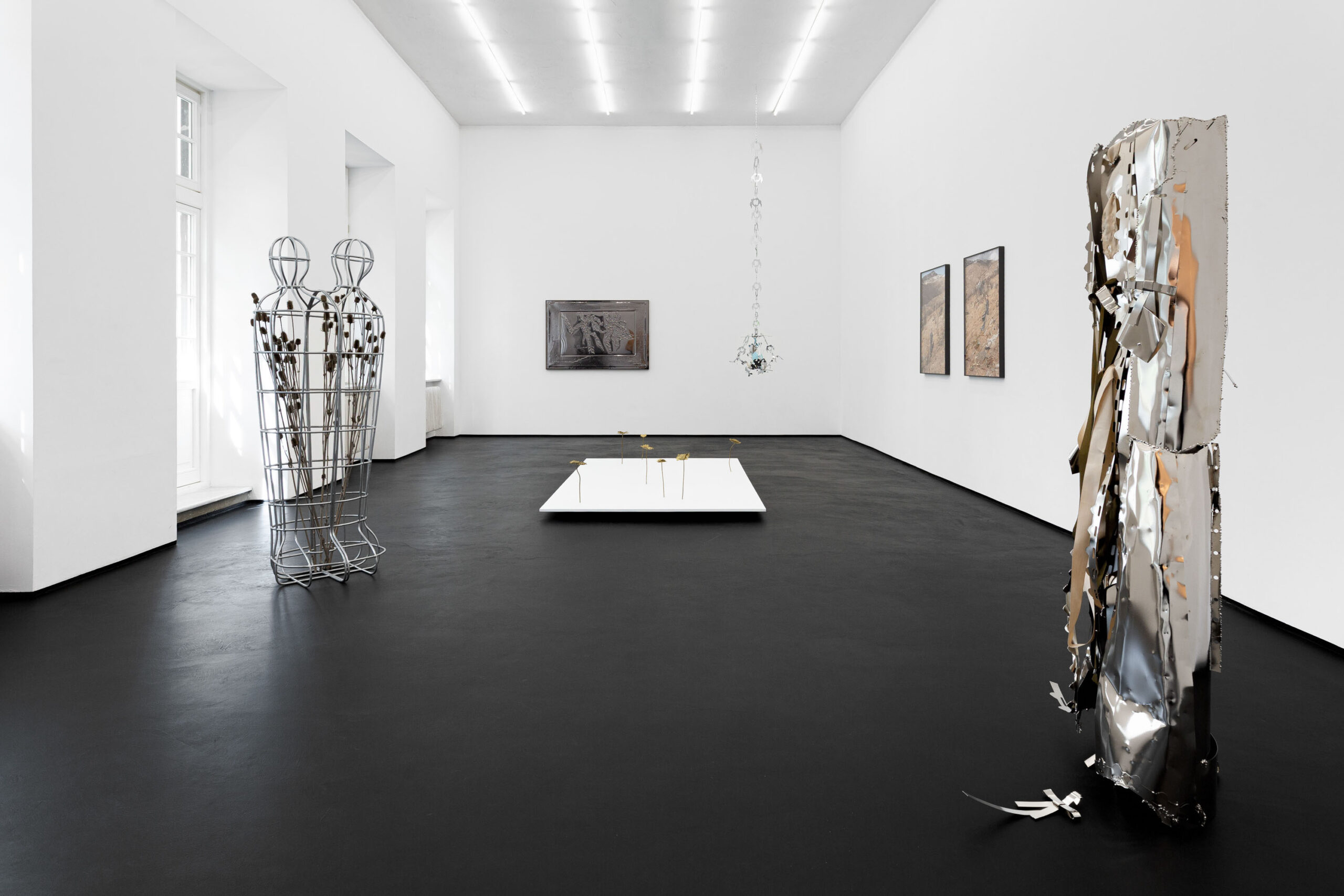
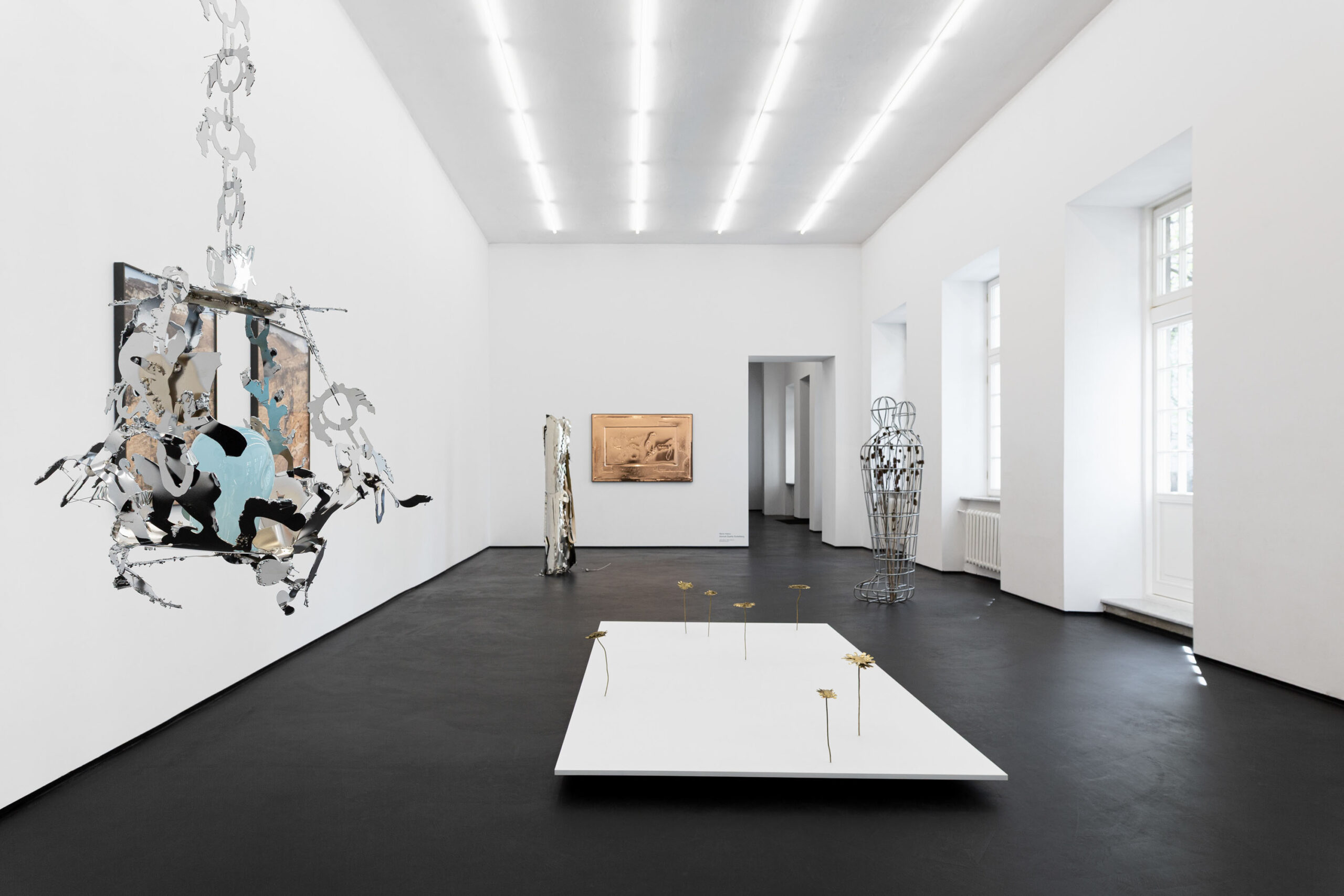
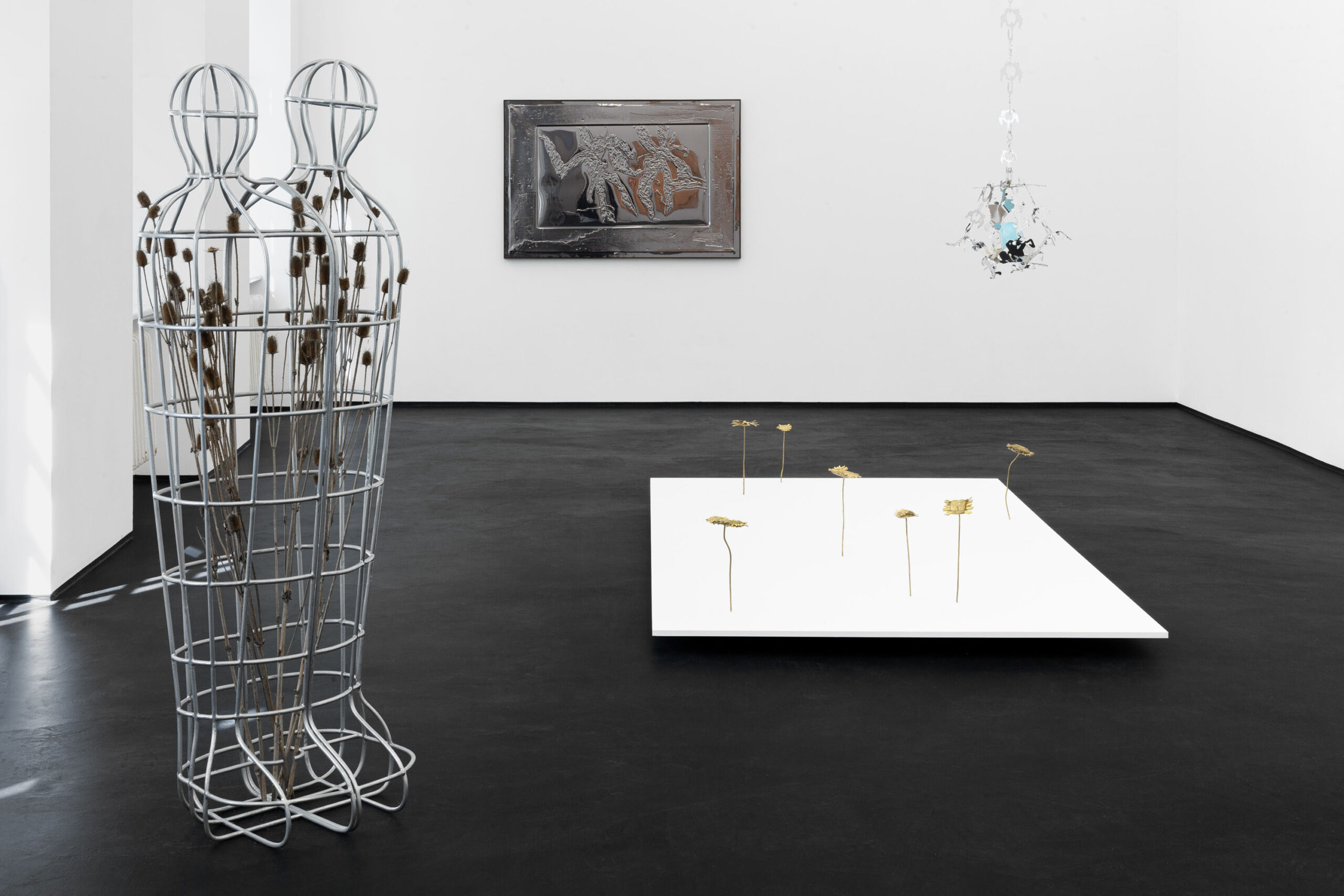
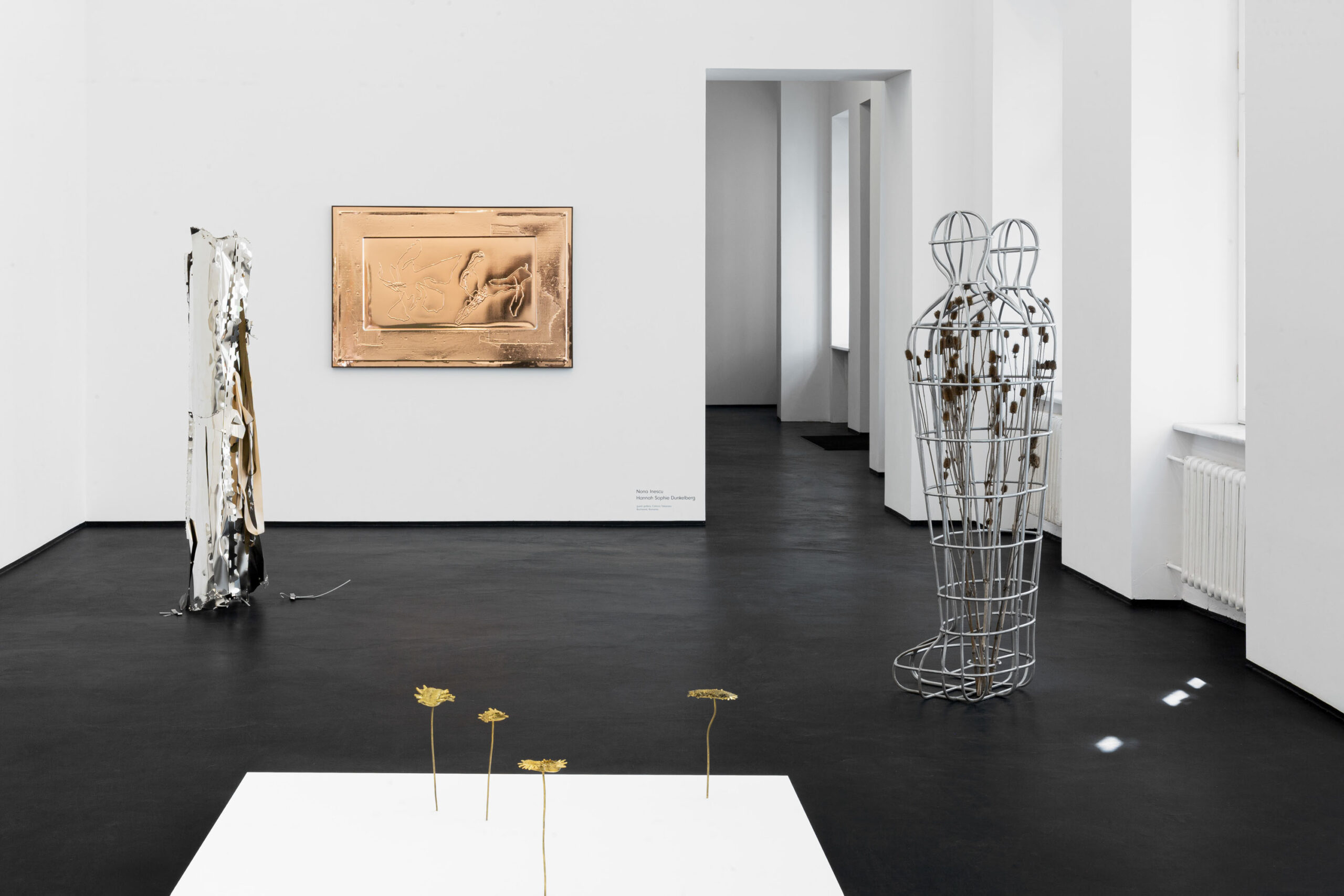
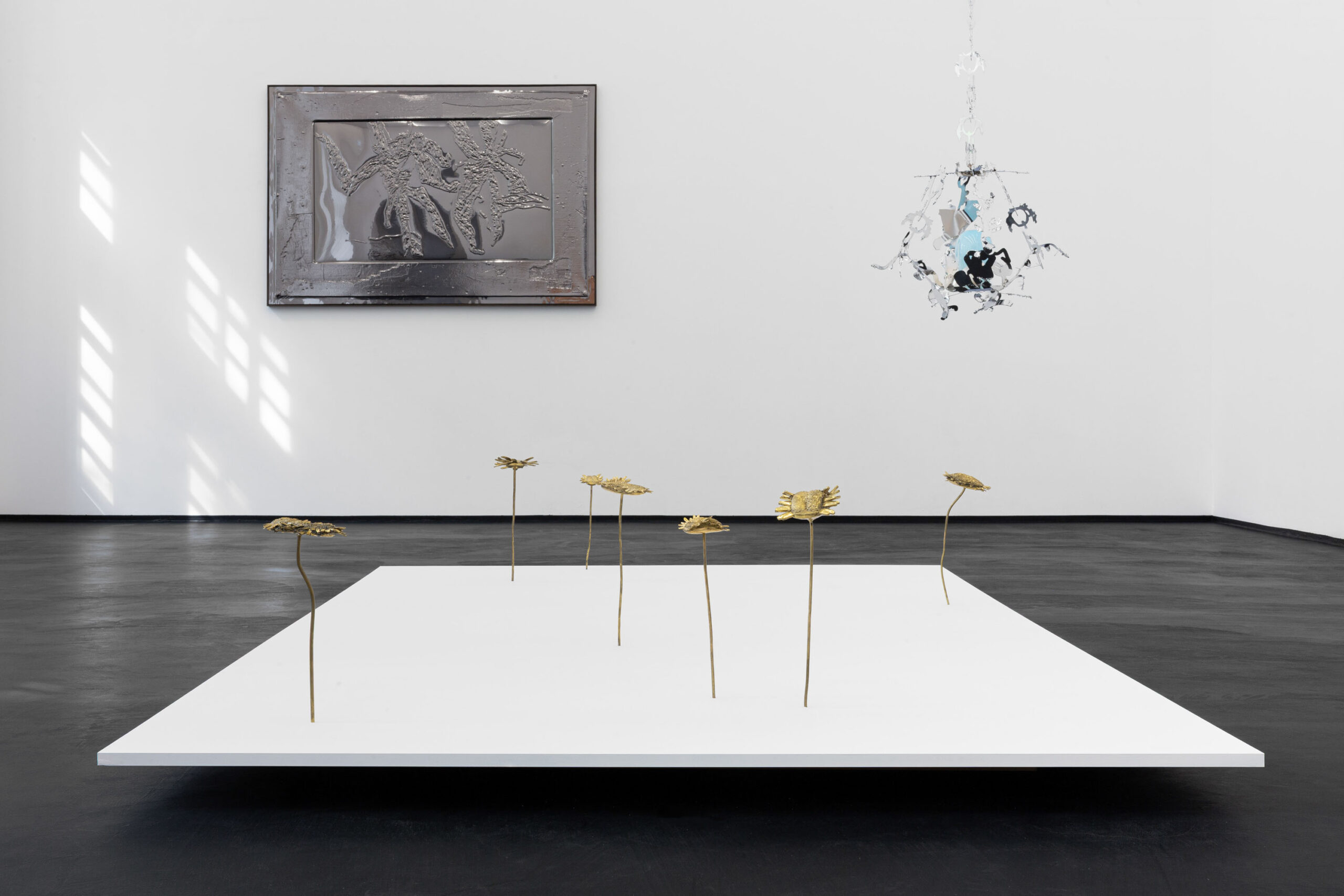
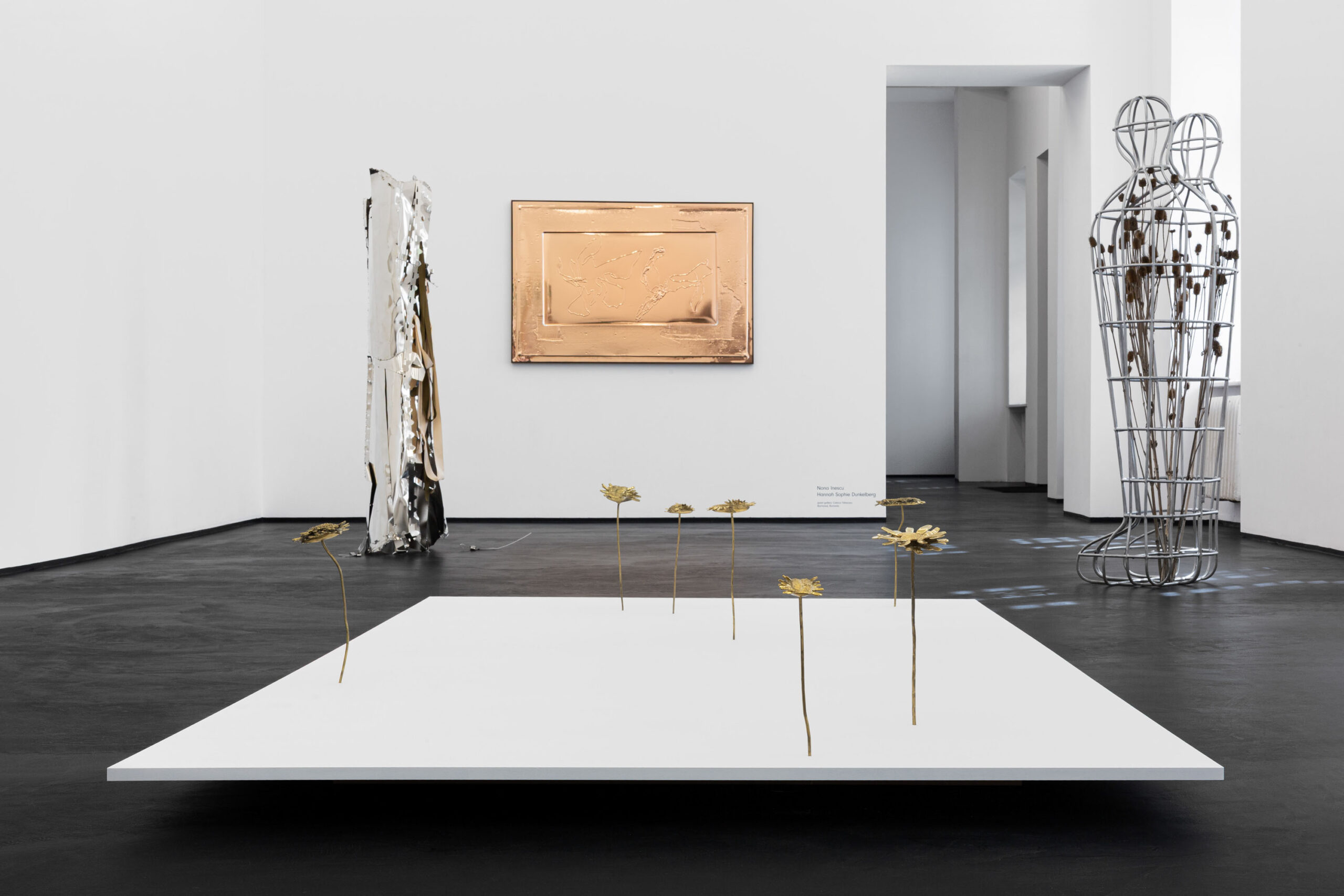
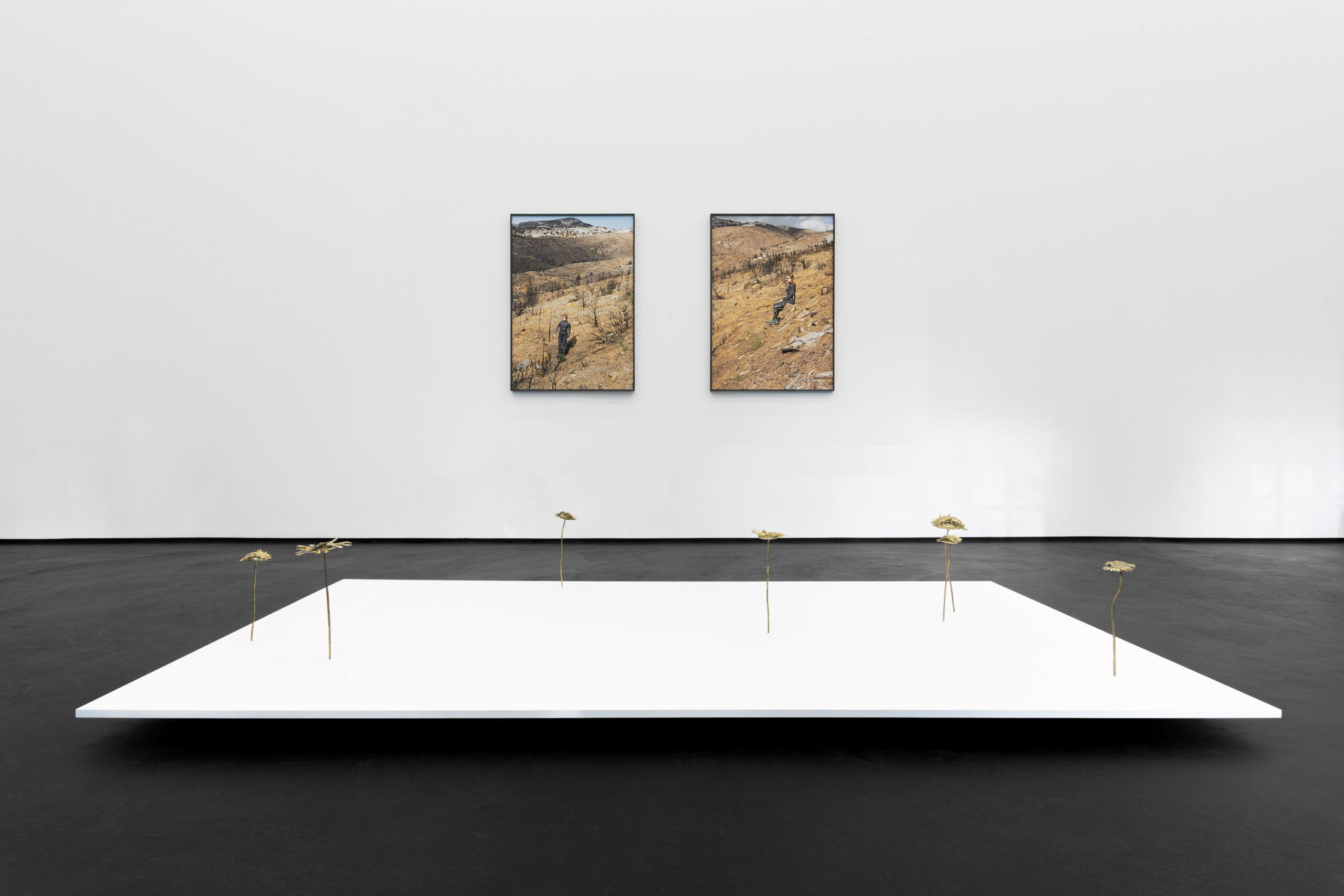
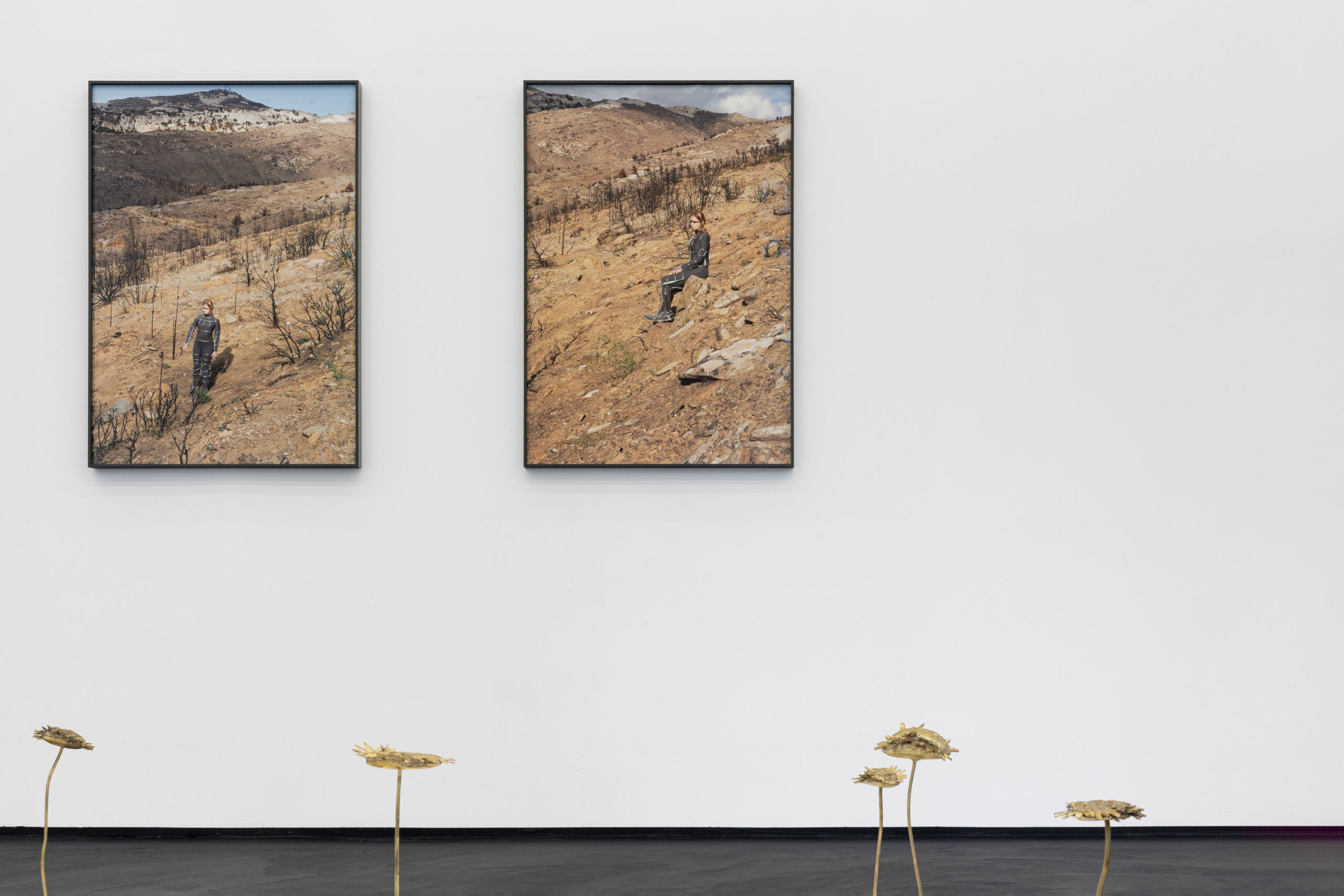
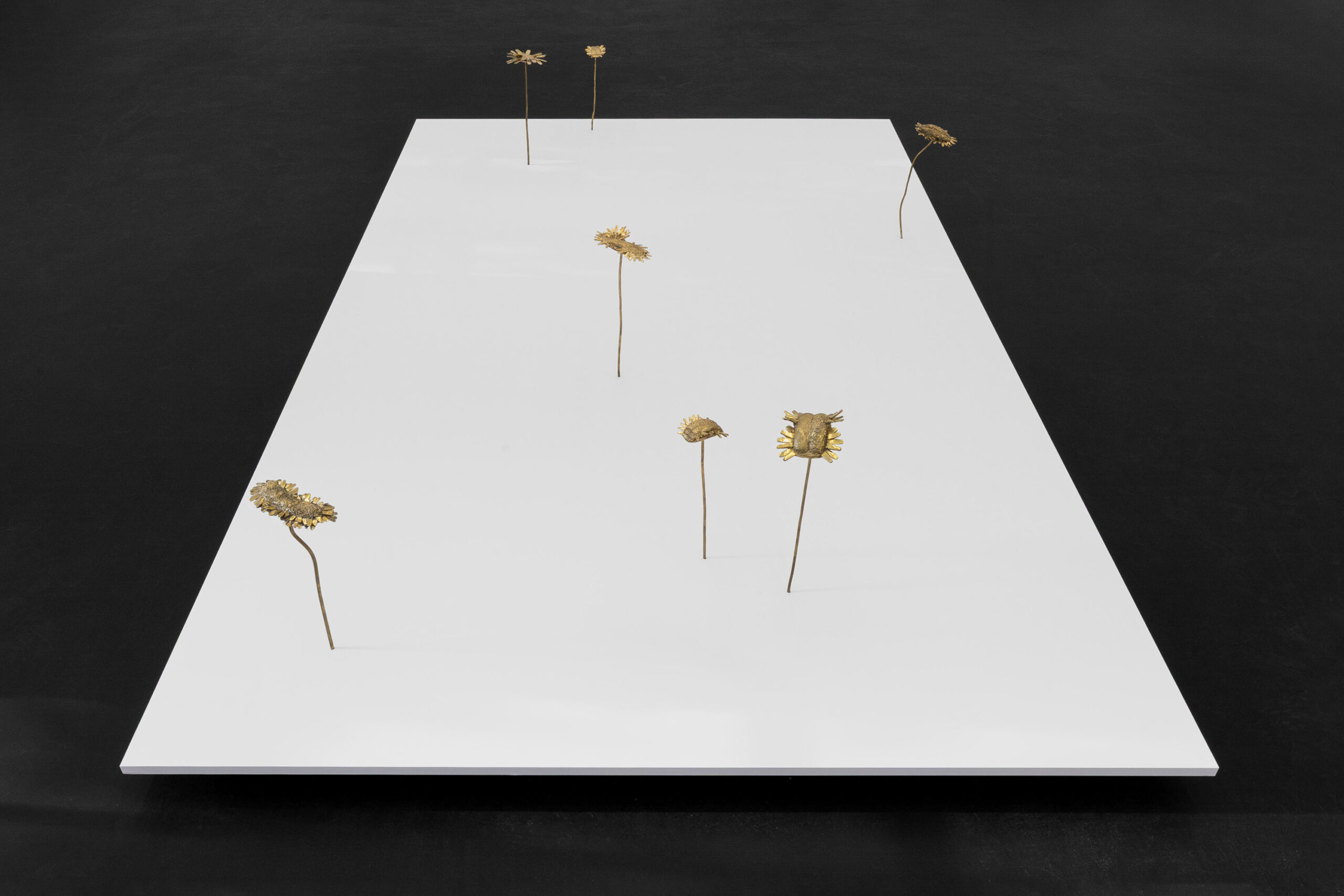
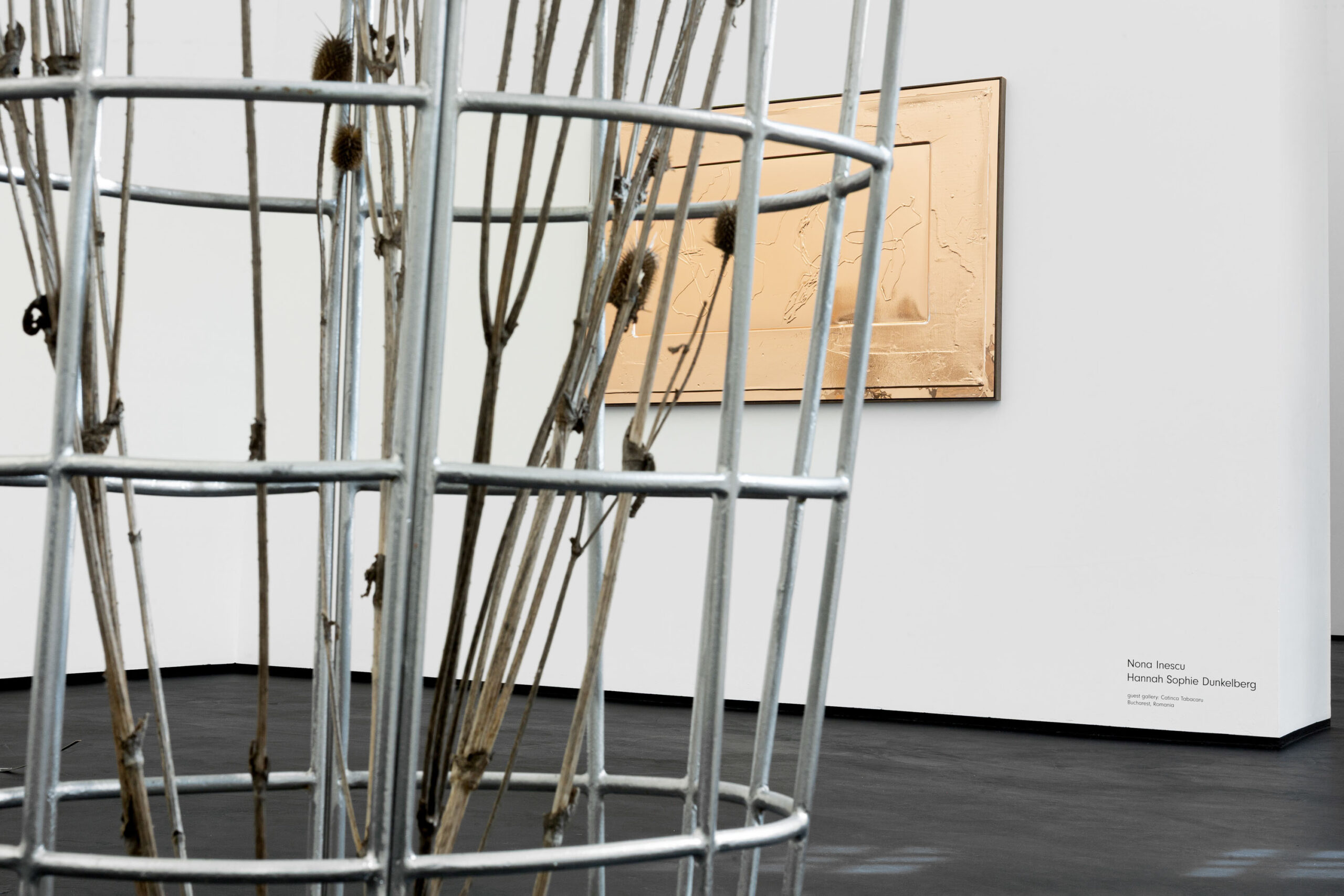
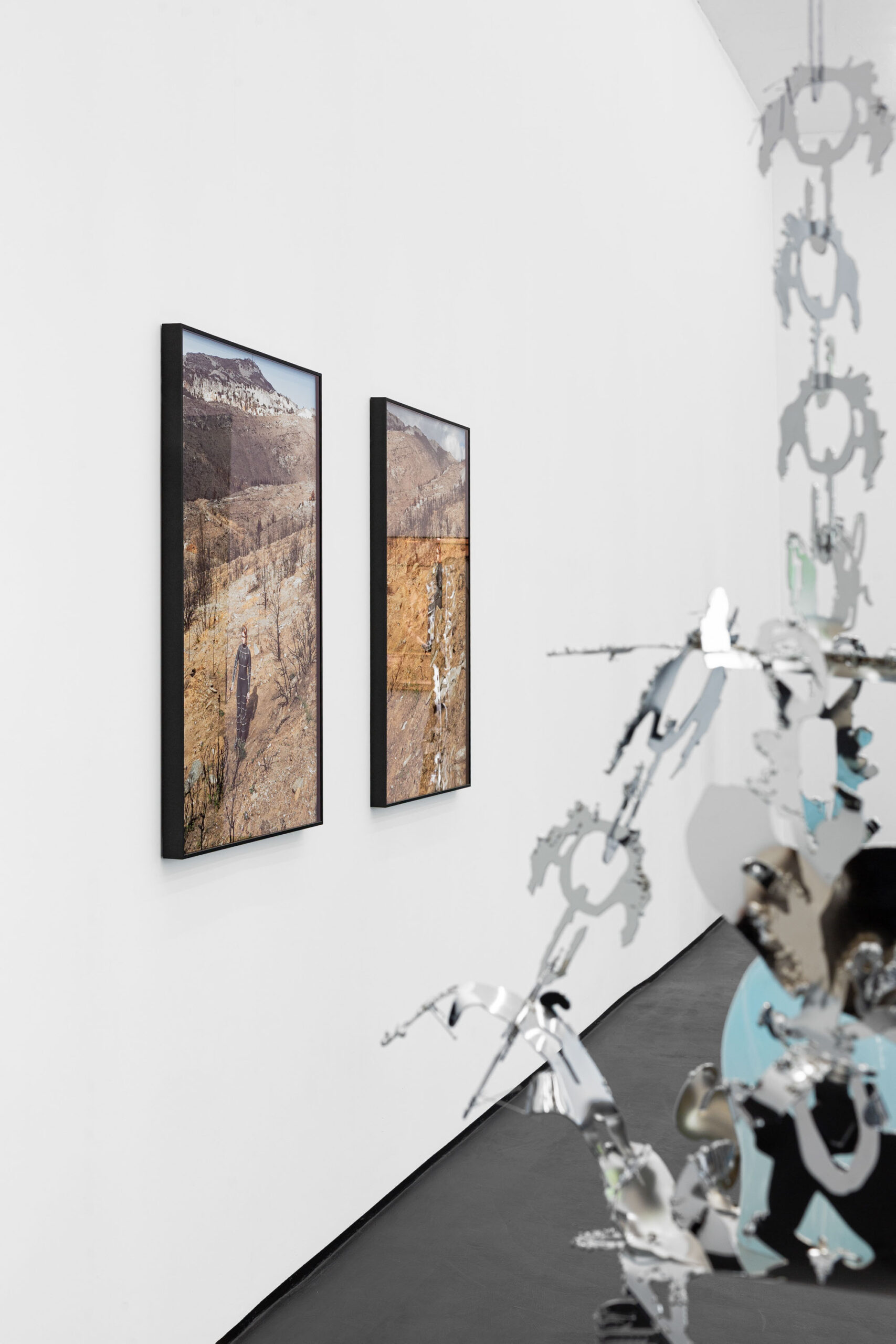
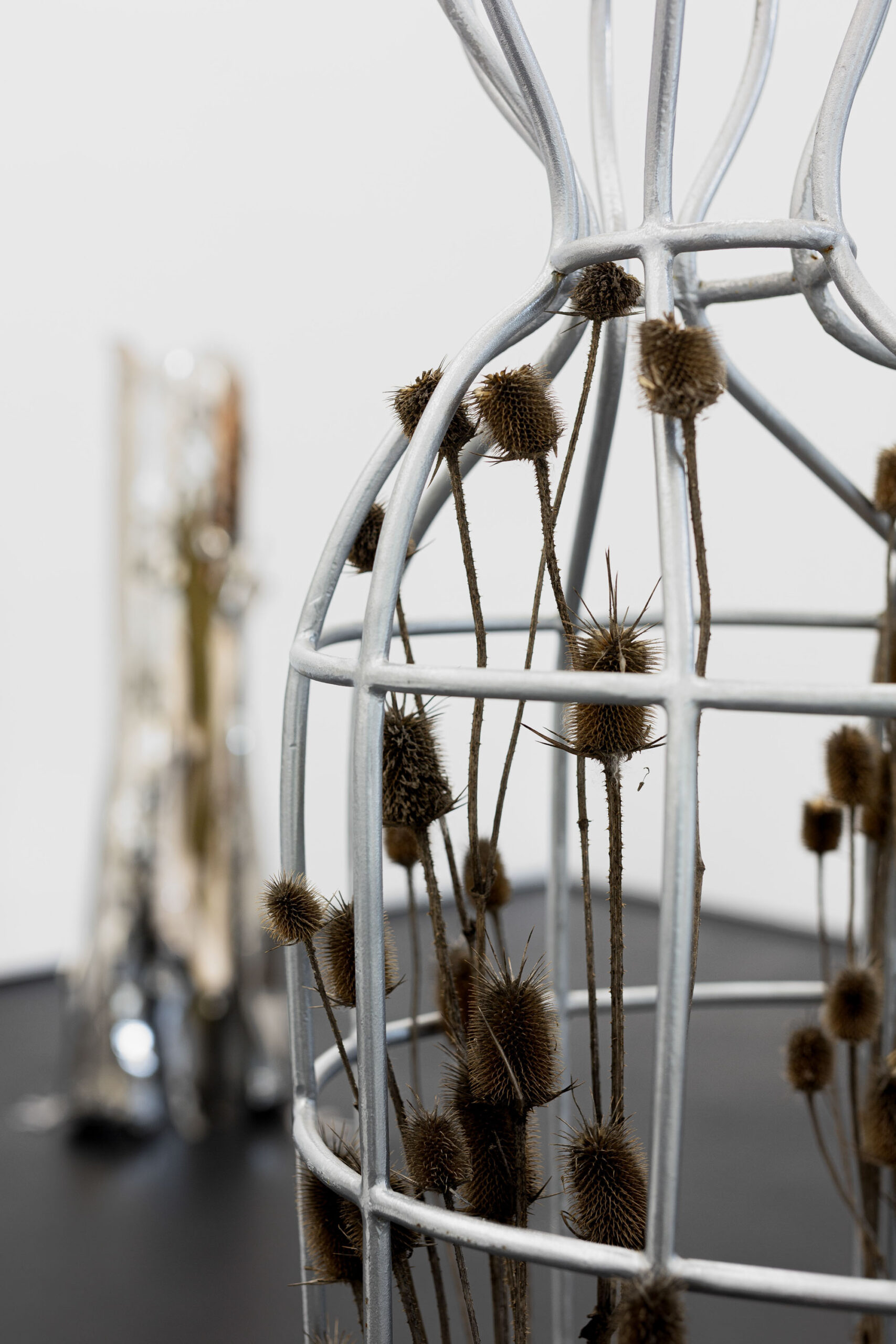


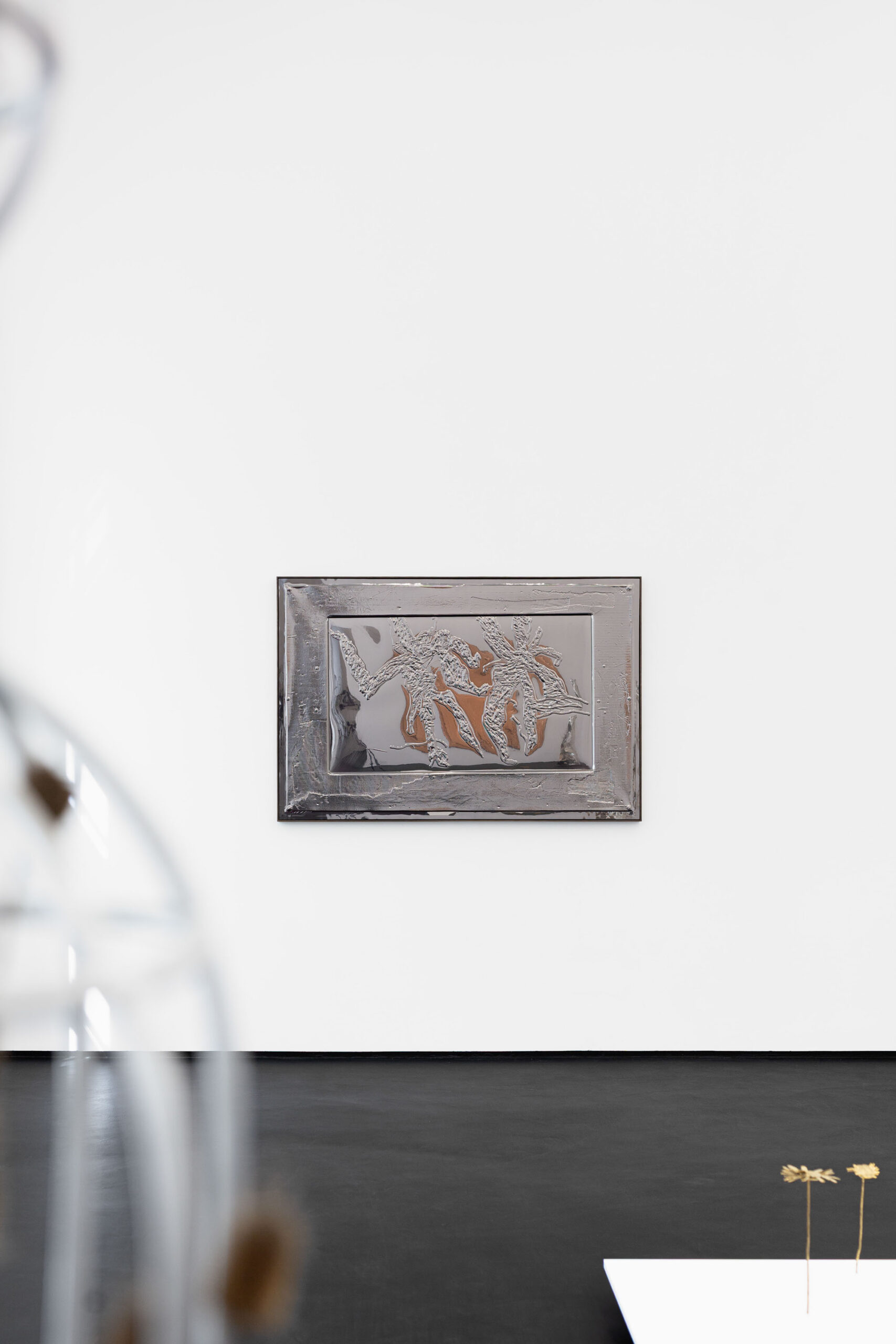
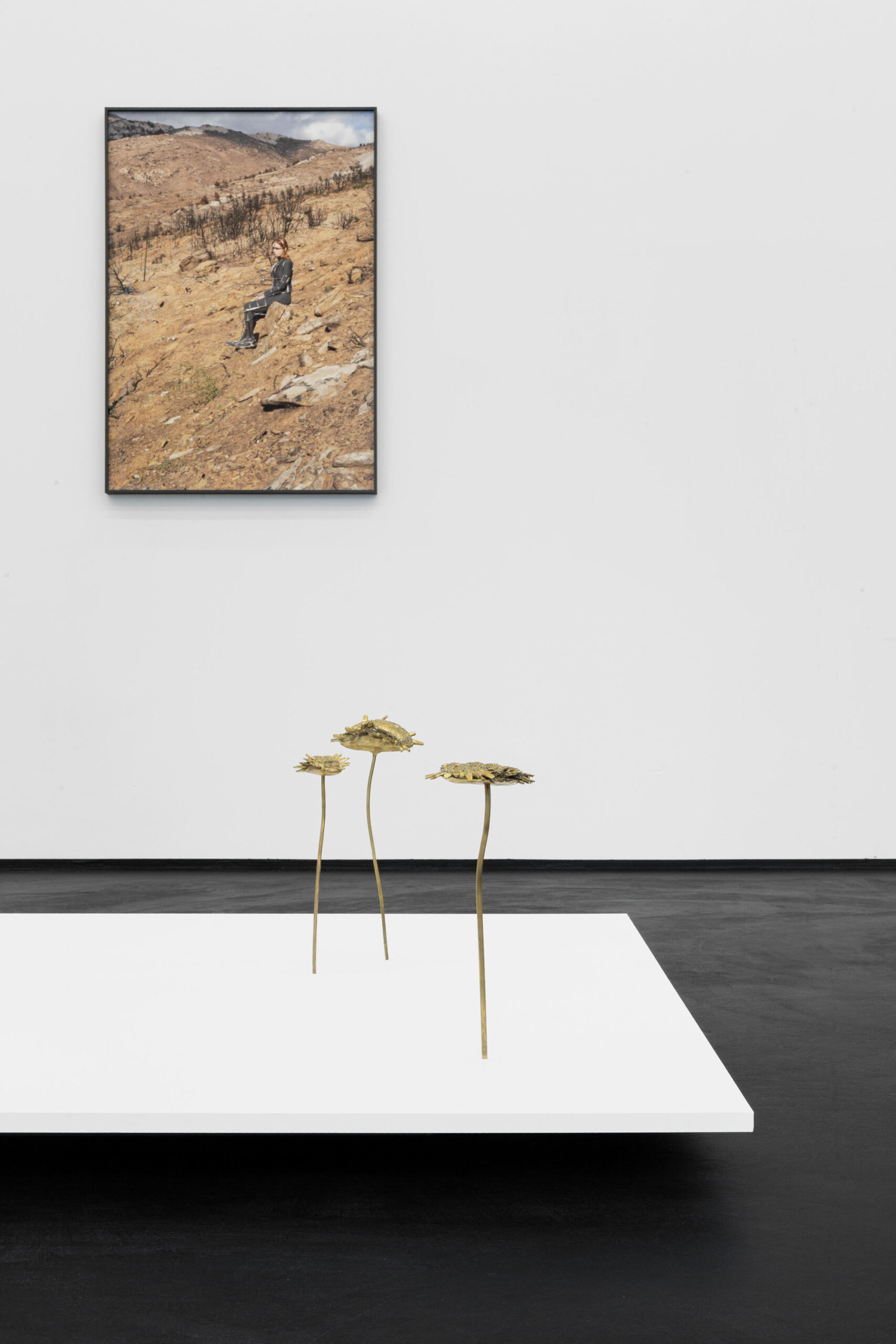
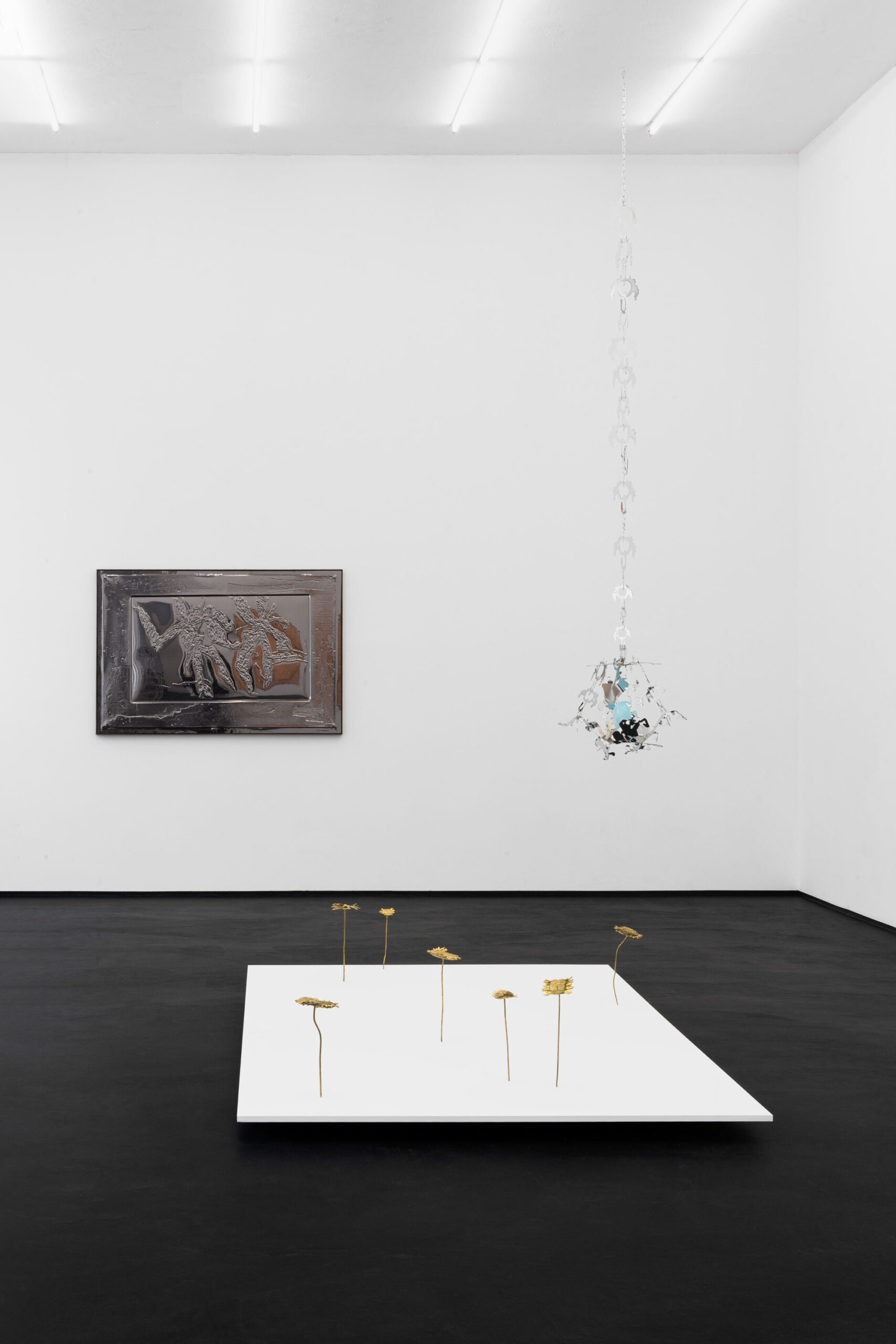
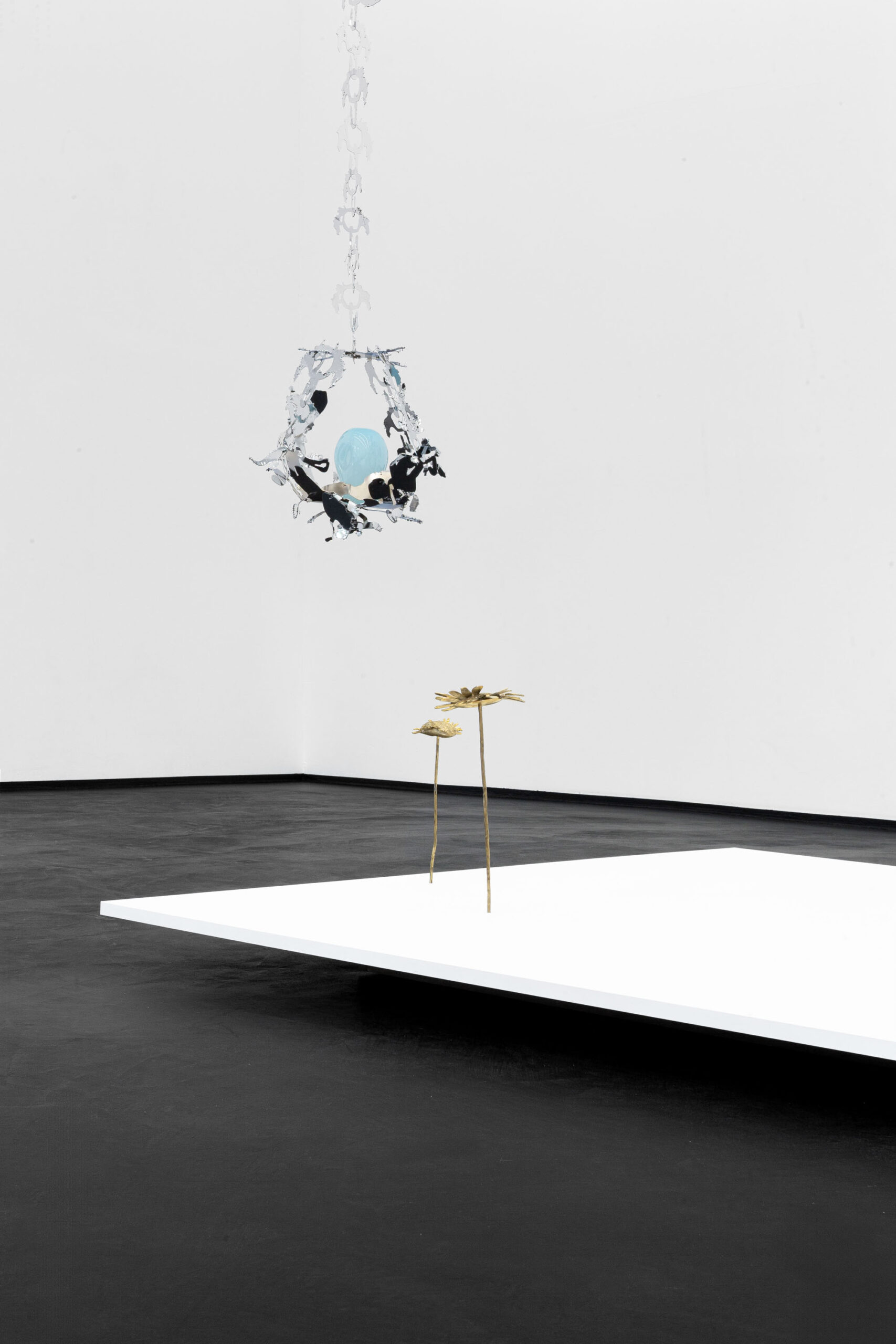
Born in 1991 in Bucharest, Romania. She studied at the National University of Arts in Bucharest, Chelsea College of Art & Design in London, and at the Royal Academy of Fine Arts in Antwerp. Her artistic practice is interdisciplinary and includes photography, installation, sculptures and video works. Based on a theoretical and literary perspective, the works focus on the relationship between the human body and the environment and the redefinition of this subject in a post-human key. The mediating properties of the body are rendered in several ways, projecting a translation of the world driven by affect, signaling its position as an interface between self and reality. Concepts of geological time and our intense interrelation with our surroundings compose an aesthetic of a primal contemporary togetherness in an organic and biological techno-sphere. She lives and works between Athens and Bucharest.
Nona Inescu is represented by Catinca Tabacaru Gallery in Bucharest, Romania.
Sculptor, born in 1987 in Bonn, Germany. She studied at the HfBK, Hamburg University of Fine Arts and completed her studies at the Berlin University of the Arts, UDK, where she studied with Manfred Pernice. Welding, forging, and lacquering the works herself, her labor-intensive practice involves industrial tools and production techniques. The playfulness of shapes and colors in addition to the influence of pop culture contradict the often heavy, cold materials (steel, aluminum, plastic). Interested in the push and pull relationship between the real and the abstract, furniture and other domestic objects and materials serve as an anchor upon which she can experiment. She lives and works in Berlin.